Sasaki Completes Master Plan for Arboretum San Antonio
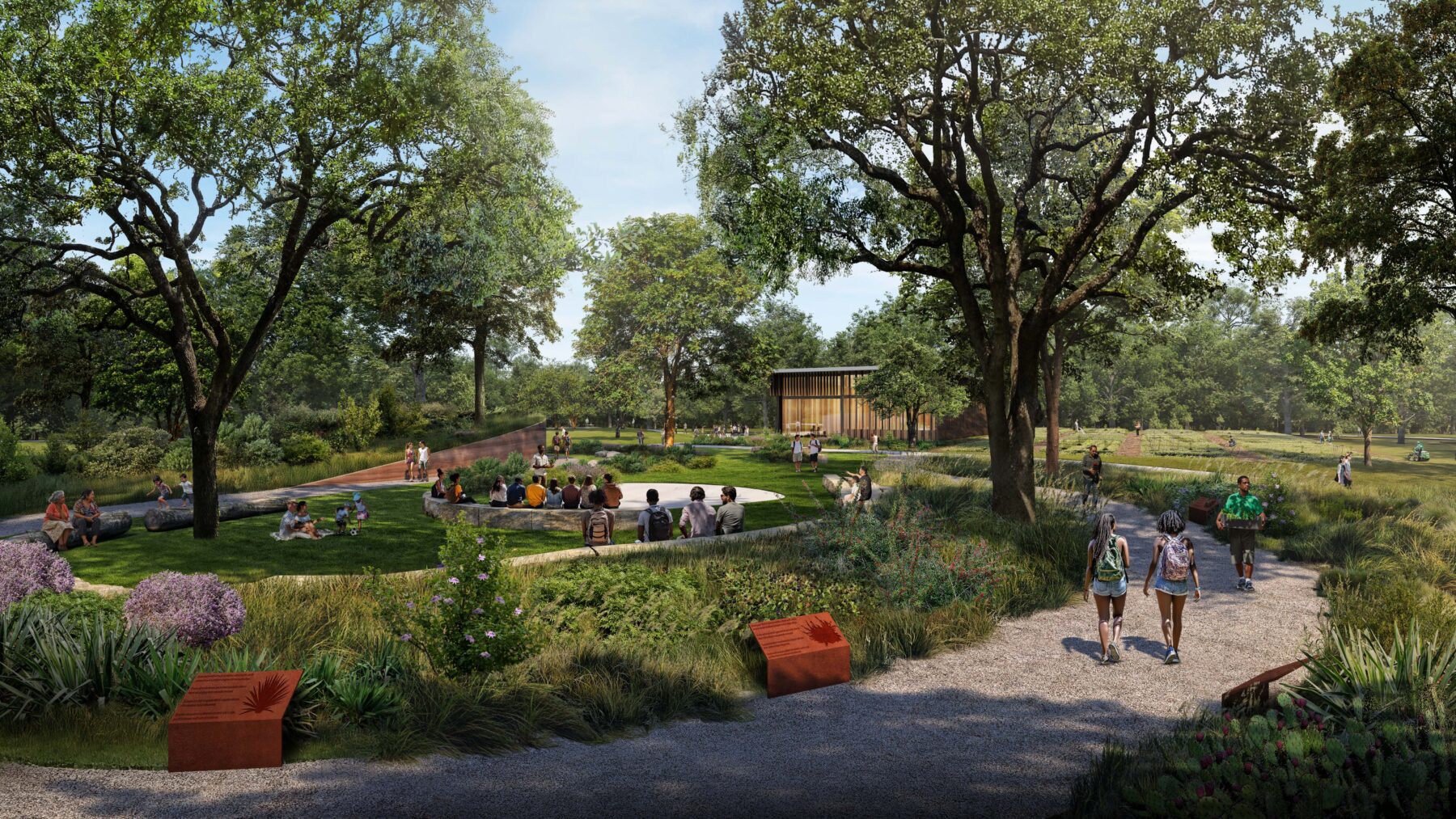
 Sasaki
Sasaki

San Antonio, Texas, May 10, 2025 – Sasaki has revealed the master plan for Arboretum San Antonio, a visionary initiative to transform the former Republic Golf Course into a living museum and a center for tree research. Located on the City’s Southeast Side, the public garden will become one of the largest arboreta in the State of Texas. The announcement was made today at a community event held at the site of the future arboretum. Titled Branching Generations, the master plan will help guide the Arboretum’s path towards becoming a haven for nature and discovery.
In March, Bexar County commissioners approved the additional acquisition of 18 acres of land along SE Military Drive, the final land purchase needed to secure the already established 188-acre Arboretum foundation. Now totaling over 200 acres, the Arboretum grounds are joined by 32 acres of City of San Antonio Park land, and 18 acres of Bexar County park land. Links to Salado Creek and the Howard W. Peak Greenway will make the Arboretum of the largest connected green spaces in the City and Bexar County.
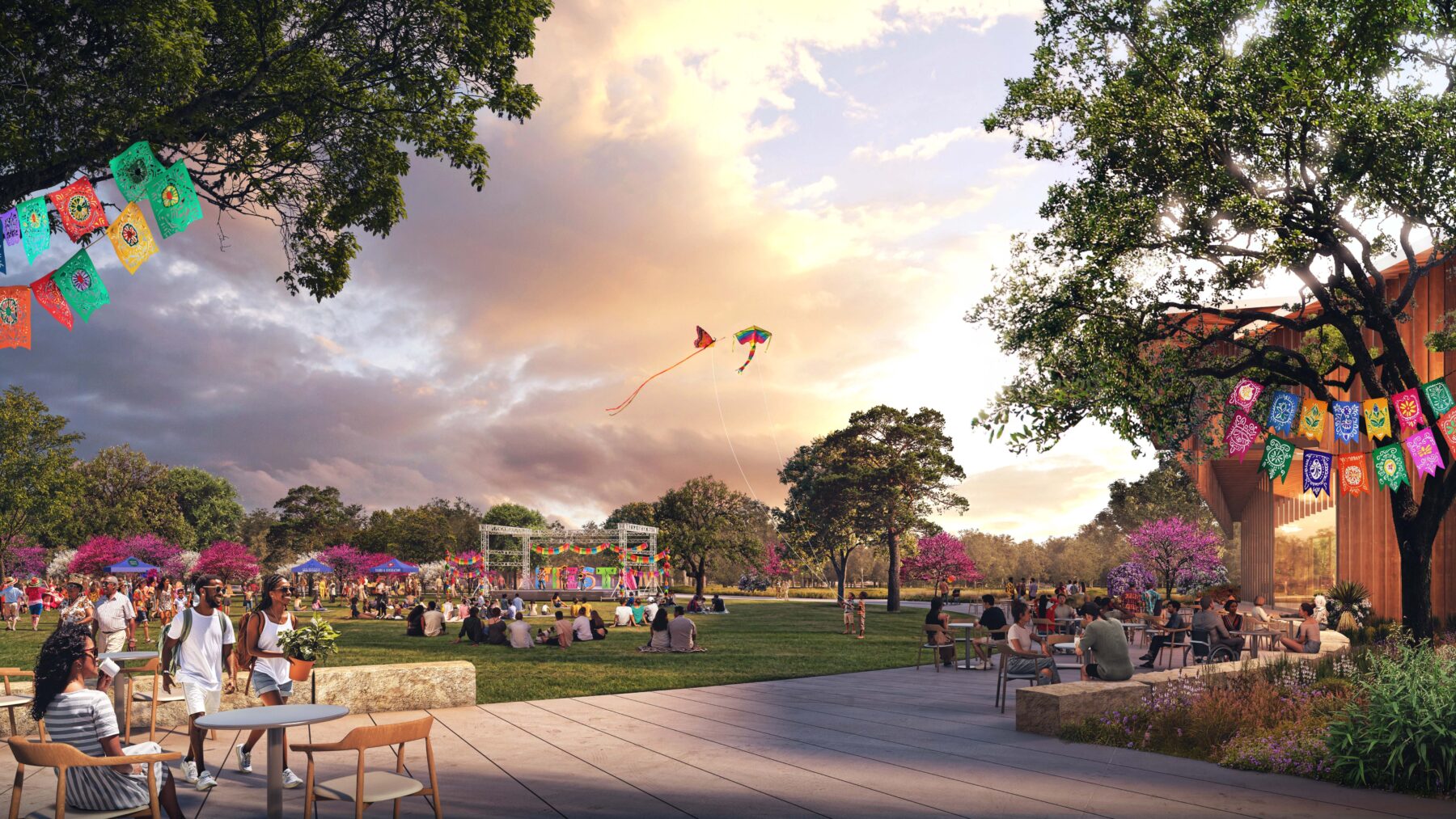
“Our final plan that you see today is the culmination of thousands of San Antonio voices coming together to create something extraordinary,” said Adriana Quiñones, CEO of Arboretum San Antonio. “Throughout our year-long planning process that we named ‘Rooted in Community’, we have been guided by one fundamental principle: this arboretum must belong to everyone. Our design reflects the community’s desire for spaces that are physically accessible, culturally inclusive, educationally rich, and ecologically sound. Community input has shaped every element.
From our outdoor classroom and discovery areas to our Veterans Grove, heritage tree preservation, water conservation features, and diverse botanical collections, we have created not just San Antonio’s first arboretum, but South Texas’ first arboretum that truly reflects the people it serves. As we move from planning to implementation, our commitment to community-driven development remains our focus. I am forever grateful to Sasaki, our local team of consultants, our Board of Directors, and the countless community members whose passion for this project is tangible.”
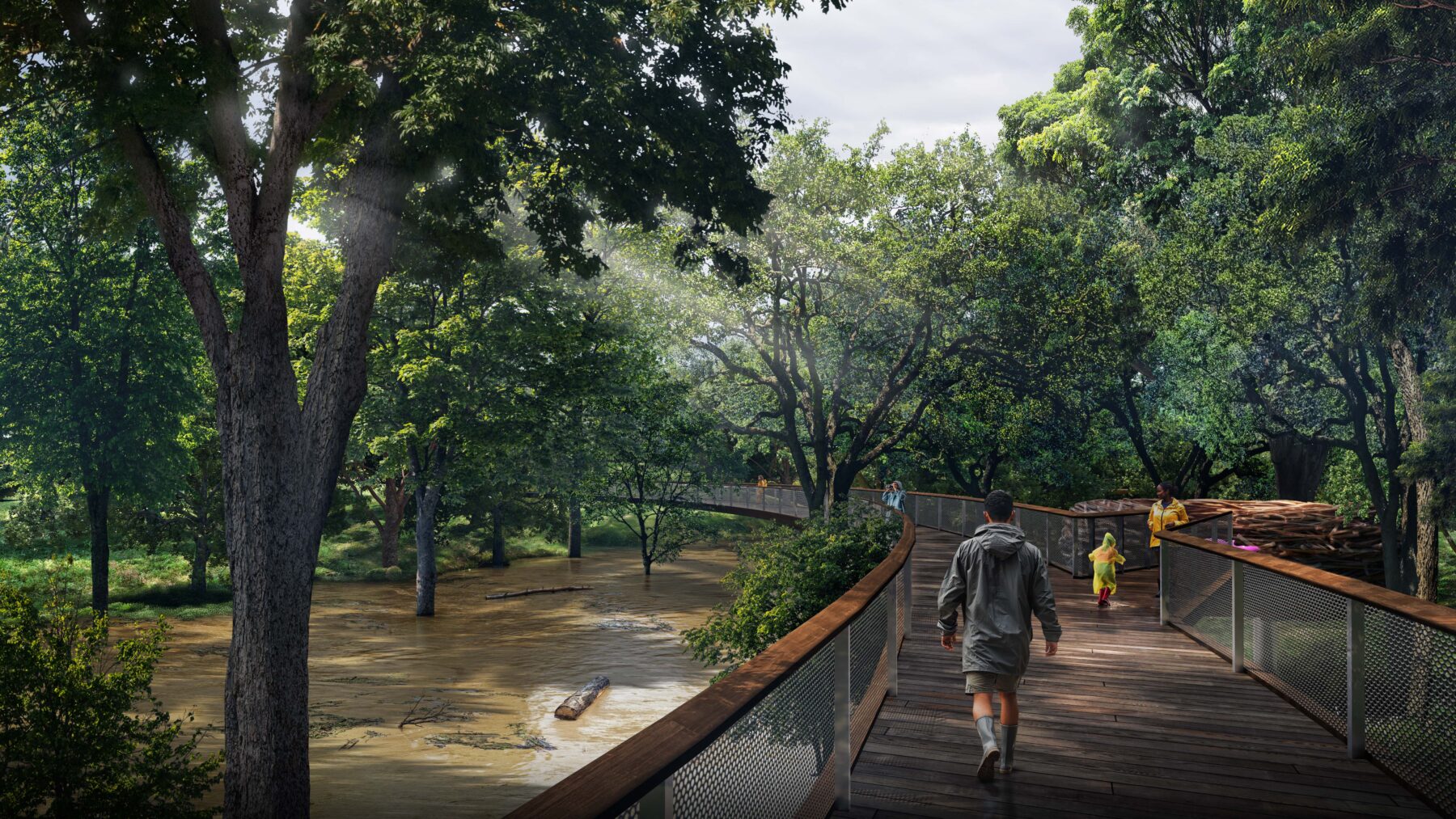
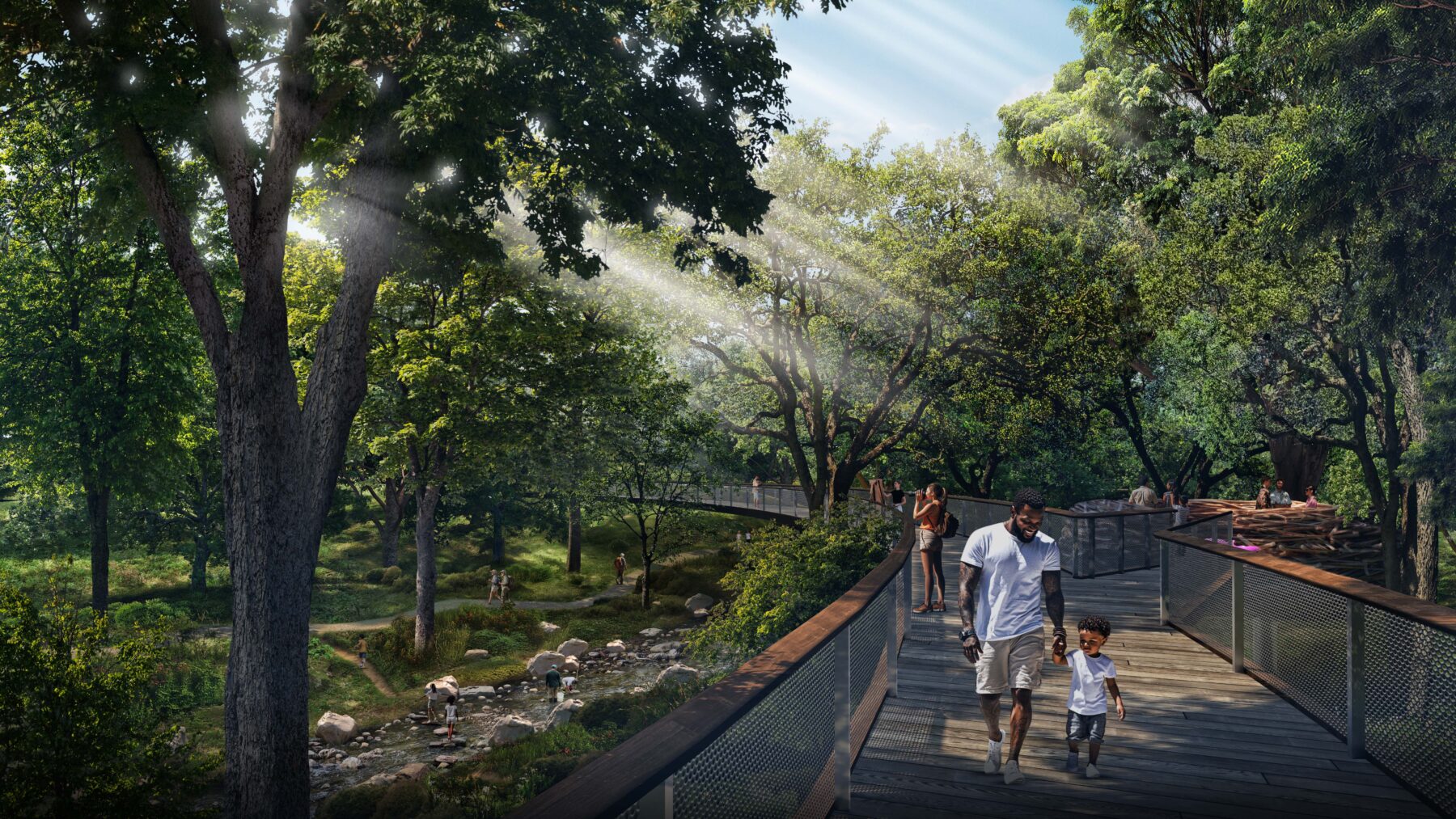
Over the past twelve months, Sasaki, along with a team of local consultants and the Arboretum San Antonio’s leadership, have been working closely with community members and stakeholders to establish the mission, vision and values of the Arboretum, while ensuring the site plan meets needs of the community as well as tree researchers and nature enthusiasts.
Through a series of larger community events, focus groups, informal pop-up sessions, radio interviews, news articles, and online surveys, Sasaki engaged over 18,000 community members directly in the visioning and design process.
These synthesized takeaways led to three concept proposals that community members were invited to discuss and vote on: Community Crossroads, Wild San Antonio, and The Testing Grounds. Each concept explored one facet of what an arboretum provides for a community–an energetic public resource for arts and education, a passive nature-based experience rooted in restoration, or a living laboratory for tree research.
Funding for the Arboretum’s land purchase, initial infrastructure, and master planning process has been provided by Bexar County. Additional support comes from the City of San Antonio to establish a city-based tree nursery, and many private and corporate donations further support the establishment of the Arboretum.
The community overwhelmingly selected Wild San Antonio as the guiding vision for the Arboretum while also highlighting programs and features of the other two concepts. In the end, the final master plan, Branching Generations, combines the best ideas of all three concepts, honoring the site’s natural history and creating opportunities for ecological restoration.
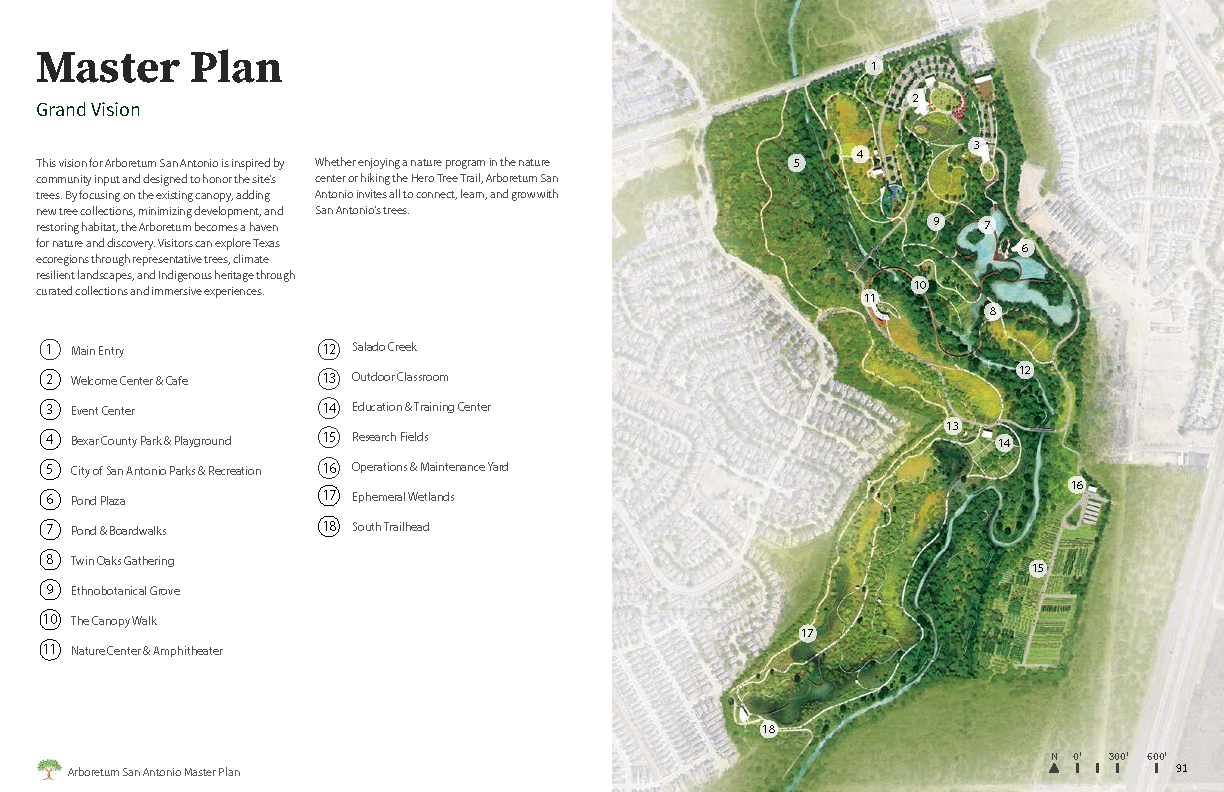
With a focus on the existing canopy and minimizing development while restoring habitat, Branching Generations creates nine arboretum zones based on expected audience, visitation duration, and existing landscape resources. Cars and parking are restricted to the Arboretum’s Core Campus, which is closest to SE Military Drive and preserves the Arboretum’s tranquility. The Core Campus houses Arboretum’s most programmed spaces, including the Welcome Center, Event Center, Retail Nursery, Cafe, and The Oval community event lawn.
Visitors can explore unique Texan ecoregions through representative plant communities, climate-resilient landscapes, and Indigenous heritage through ethnobotanical collections and land management practices. A demonstration Texas pollinator garden, oak savanna collection, and Veterans Grove provide essential learning opportunities for the public. In tandem with native plant species, representative trees and shrubs from the San Antonio Sisters Cities collection will also be planted, connecting visitors to ecological communities both local and global.
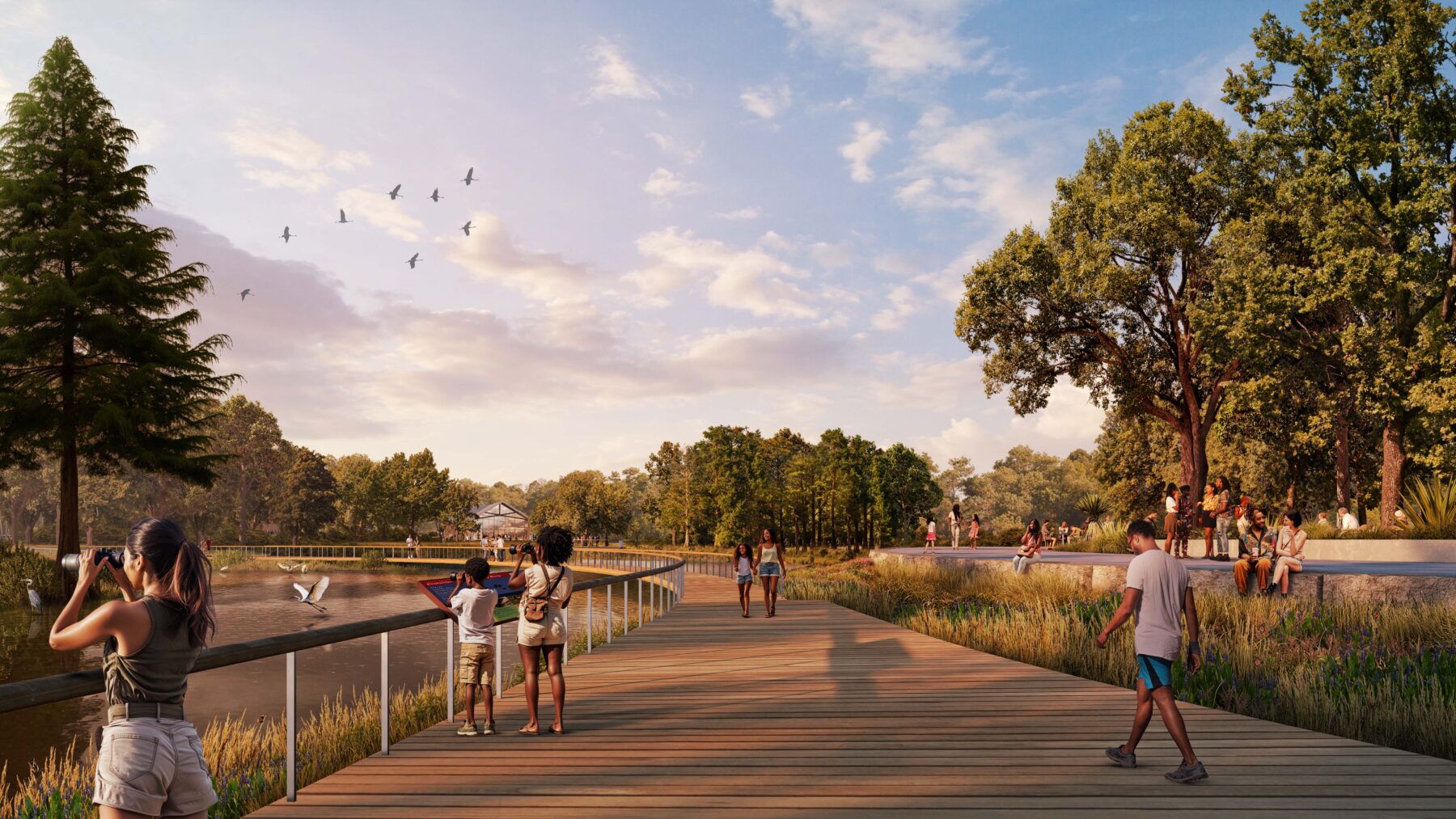
The El Paseo promenade serves as the park’s primary circulation loop, an accessible foot and shuttle path that connects the Arboretum’s core campus to other amenities like the Nature Center and outdoor amphitheater, the Canopy Walk, the Research Center, and tree trial plots. For more adventurous hikers, El Paseo connects visitors with the Arboretum’s Wilds, where the Arboretum’s ecoregional collections represent trees from the Edwards Plateau, Post Oak Savanna, South Texas Plains, and Blackland Prairie. Visitors will have the opportunity to hike along Salado Creek, explore Mesquite forests, and birdwatch at the ephemeral wetland on a variety of paved, accessible, and rustic trail experiences.
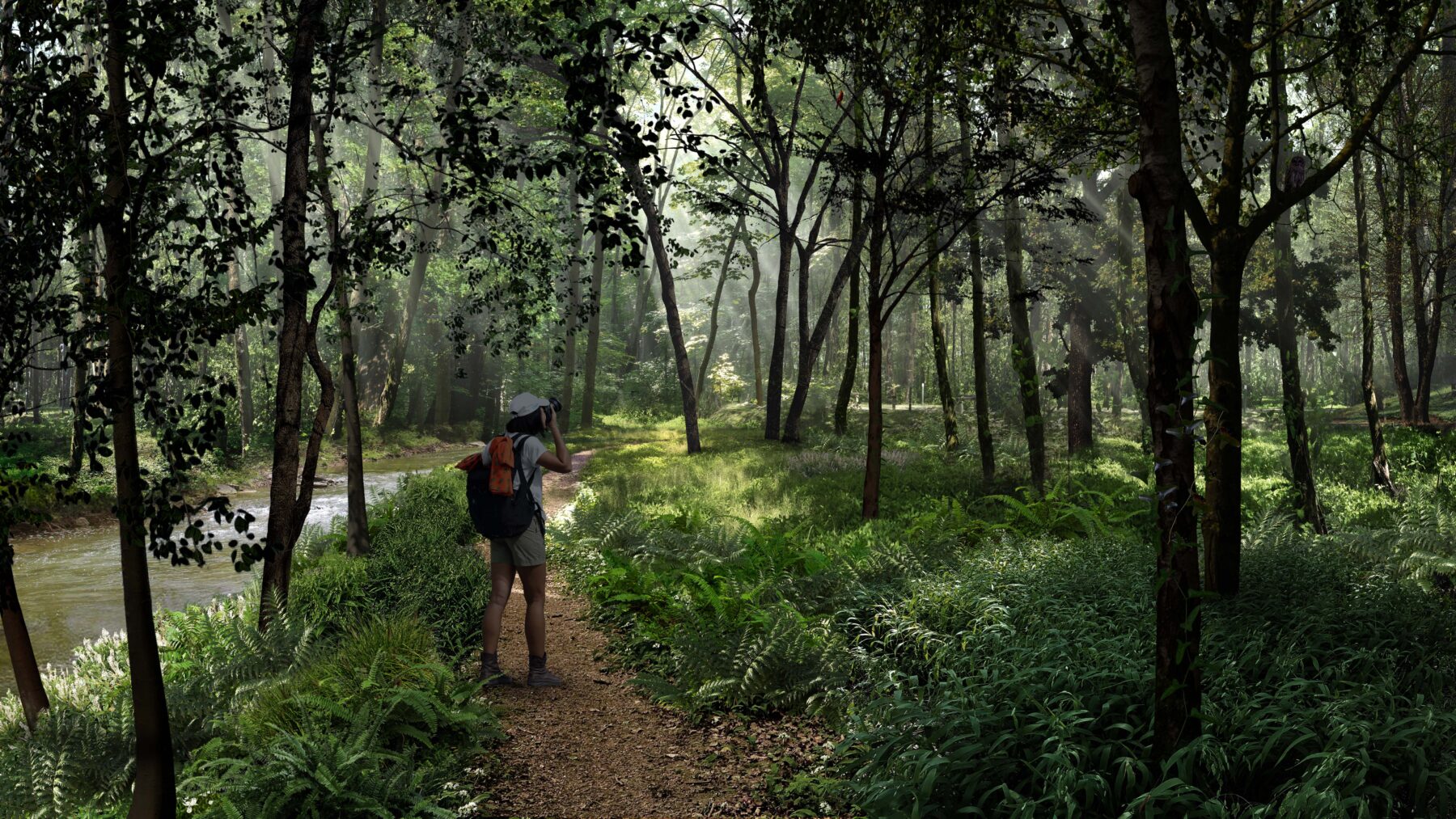
Currently, Arboretum San Antonio’s “cathedral of trees” is home to 31 documented arboreal species, including huge specimens of live oaks that predate the Battle of the Alamo and were part of the ancestral lands of indigenous communities in the area. This already robust collection will be added to in the coming years to form specific tree collections related to ethnobotanical education and climate adaptation research. Arboretum San Antonio will be an epicenter of tree education, research, and enjoyment, including a canopy walk that brings visitors into the branches of live oaks and cedar elms along Salado Creek.
The park’s trail network will connect to and expand upon the Howard W. Peak Greenway Trails System, bolstering the city’s network of walking and biking paths. The site is conveniently located near highways and is just a 10-minute drive from the heart of downtown San Antonio.
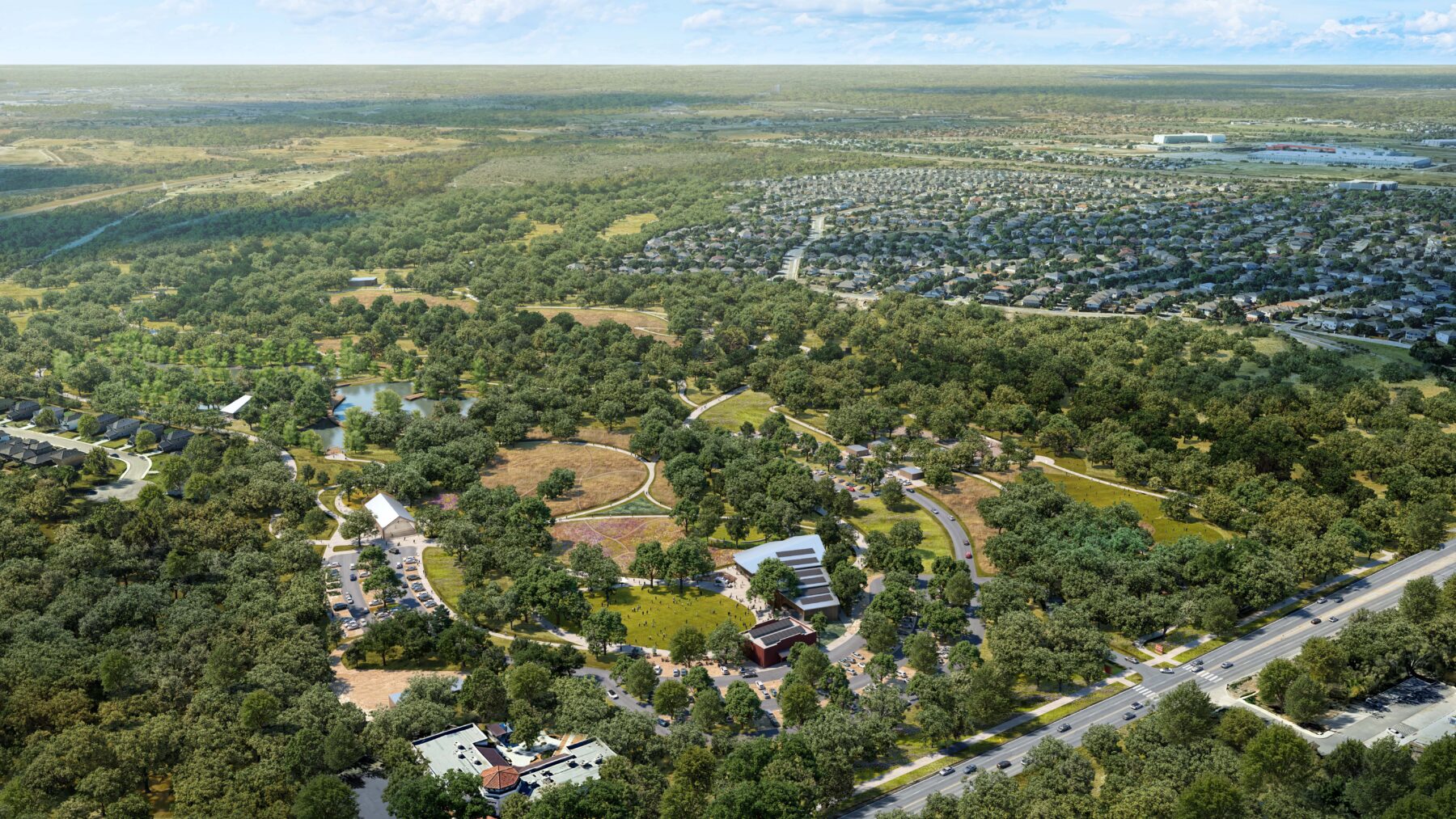
Sasaki is working with a team of San Antonio-based partners, including MPStudio, Work5hop, Ximenes & Associates, Pape-Dawson Engineers, Urban Tree Company, Cielo Strategy Group, Robb S. García, and Jeanette M. Honermann.
Arboretum San Antonio will be a celebration of South Texas’ vibrant landscape and its people, strengthening ties between the San Antonio community and their natural surroundings and creating pathways for learning, recreation, and ecological restoration that will grow and endure for generations to come. Whether enjoying a nature program in the nature center or hiking the Hero Tree Trail, Arboretum San Antonio invites all to connect, learn, and grow with San Antonio’s trees.
About Sasaki:
Sasaki has been a leader in the design industry for 70 years. The firm is known for blending disciplines, engaging with clients and communities, drawing on history and context, and using data and emerging technologies to shape the built environment. With offices in Boston, Denver, New York, Los Angeles, and Shanghai, Sasaki’s 350 professionals partner with education, civic, and commercial clients around the world. Sasaki’s integrated services span architecture, interior design, planning and urban design, space planning, landscape architecture, and civil engineering.
About Arboretum San Antonio:
Arboretum San Antonio is the first arboretum in San Antonio and South Texas and the second-largest in Texas, spanning 200 acres of diverse green space. Located at the former Republic Golf Course in southeast San Antonio and acquired in 2023, this exceptional property sits at the intersection of four Texas ecoregions: Edwards Plateau, Blackland Prairie, Post Oak Savanna, and South Texas Plains. The site features heritage trees, Salado Creek frontage, a recycled water pond, and four miles of existing paved trails. Just 10-12 minutes from downtown with access to major highways and the city’s trail network, the arboretum combines urban accessibility with natural serenity. Arboretum San Antonio has completed a one-year master planning process and now moves to a planned four-phased development, with an estimated breaking of ground and public accessibility in 2028. By focusing on the existing canopy, adding new tree collections, minimizing development, and restoring habitat, Arboretum San Antonio will become a haven for nature and discovery.
For media inquiries, please contact:
Eric Baldwin
Director of Communications, Sasaki
Kate Edwards
Vice President of Communications and Marketing, Cielo Strategy Group